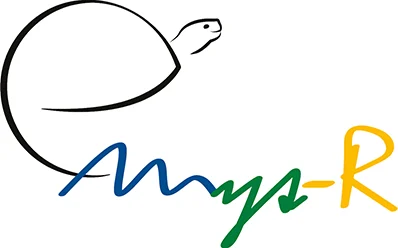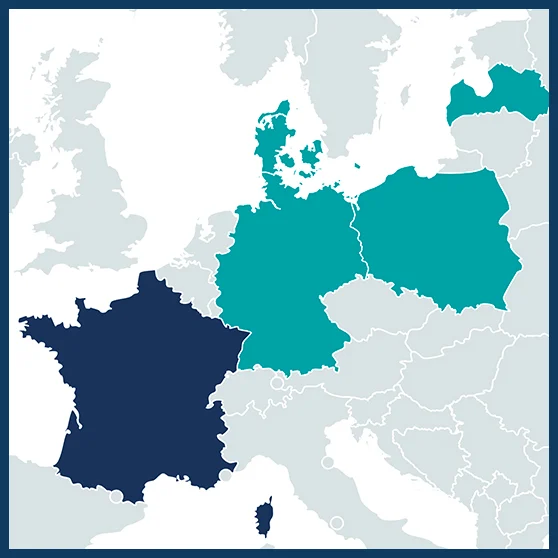
01.02.2022 – 31.01.2025
€ 1,045,316
Jean-Yves GEORGES
jean-yves.georges@iphc.cnrs.fr
Coordinator: Pluridisciplinary Institute Hubert Curien (IPHC), CNRS/Strasbourg University, Strasbourg, France
Image, City, Environment Laboratory (LIVE), CNRS/Strasbourg University, Strasbourg, France
Territorial Management of Water and the Environment (GESTE), National School for Water and Environment Engineering, Strasbourg, France
Environment and Territories, The European Community of Alsace, Strasbourg, France
Loewe Centre for Translational Biodiversity Genomics, Senckenberg Nature Research Institute/ Goethe University/ Giessen University/ Max Planck Institute, Frankfurt, Germany
Ministry of Environment and agriculture, Germersheim District administration, Germersheim, Germany
Nature and Biodiversity Conservation Union (NABU), Rhineland-Palatinate, Mainz, Germany
Life Science and Technology, Daugavpils University, Daugavpils, Latvia
Socio-Economic Geography, Gdansk University, Gdańsk, Poland
Systems Collective Design Lab (HIVE), Collegium Civitas, Warszawa, Poland

The EU Biodiversity Strategy for 2030 emphasises that “we need nature in our lives”. Yet, the world is currently facing its 6th biodiversity crisis partly due to land mismanagement. Habitat restoration and reintroduction of threatened species are considered an operational strategy for limiting biodiversity erosion. The European pond turtle Emys orbicularis (hereafter ‘Emys’) is of particular interest in this context: in Europe where wetlands declined by 90% since the 18th century, it has suffered the most dramatic decline of all reptiles. The fact that conservation measures in favour of Emys benefit to biodiversity and the positive public perception it enjoys, explain why Emys has received much attention from scientists and stakeholders. Over the last 3 decades, the EU has funded numerous projects for wetland restoration in favour of Emys. Yet the results of these measures need to be more intensely promoted. A key question remains unanswered: what are the most effective wetland restoration methods suitable for sustainable maintenance of the European pond turtle and associated wildlife throughout Europe?
Emys-R consolidates an existing international network of researchers and stakeholders to share complementary knowledge and expertise on past, present and future wetlands, biodiversity and management. It is a 3-year participatory action-oriented research project based on seminal theories in humanities, social and natural sciences. It aims at testing the hypothesis that higher degrees of wetland restoration can compensate for limited capabilities of captive bred Emys to settle in the wild, and how specifically such conservation actions benefit society by bringing together people and nature. Emys-R aims at:
- Investigate the ecological processes improving wetland restoration and Emys reintroduction based on monitoring of biodiversity and of reintroduced populations of Emys in three different contexts of land management
- Assess trade-offs and synergies between targets, benefits and policies, with a focus on nontarget species (threatened amphibians and invasive crayfish), and on value benefits of restoration, people’s perception of restored nature, citizen science and deliberative processes involved in multi-stakeholder decision settings related to nature conservation.
Ultimately, Emys-R will produce guidelines for optimal wetland restoration protocols in favour of Emys reintroduction and people engagement in nature conservation based on our integrative approach, a review of past and current results, and a forecasting model of distribution and abundance of Emys at the European scale.
This very first integrated analysis of socio-ecological processes in degraded wetlands will lead to socially supported, effective wetland restoration in favour of the Emys and associated local biodiversity throughout Europe.
Emys-R will host four internationally co-supervised PhD candidates who will benefit scientific training in a transdisciplinary research project while contributing to the dissemination of the results.
Emys-R will gather scientists from different academic disciplines and stakeholders (local inhabitants, land users, nature conservation and management actors and local decision makers) to address:
- The economic sector by assessing the value benefits of wetland restoration through a non-monetary metric, namely the habitat unit.
- The sociological sector by assessing the values of nature given by citizens and authorities that motivate people and politicians to support and/or to engage themselves in conservation actions and to evaluate how citizens’ knowledge and involvement can contribute to academic knowledge and decision making.
- The knowledge transfer sector, by expanding knowledge dissemination and transfer between academic experts, inhabitants, local actors of nature conservation and land management and local-to- national authorities throughout Europe, where similar restoration and reintroduction actions occurred, in order to identify best practices that promote non- expert, and particularly citizen’s contribution, to decision making in environmental policies.
Emys-R operates on 3 study sites where EU-funded wetland restoration and Emys reintroduction took place in contrasted biophysical and socio-ecological contexts (i.e. study sites’ recent history; stakeholders, management and protocols involved; areas use and accessibility to the public), providing ideal study cases for assessing common and specific processes involved in the ecological and sociological success of such actions. Emys-R will occur in France (Woerr, Lauterbourg) and Germany (Neuburg am Rhein) that hosted a former INTERREG project (Cistude sans frontières / Schildkröten ohne Grenzen), and in Latvia (Sitas lake area, Silene) that was part of a former LIFE project (HerpetoLatvia).
- Agence Nationale de la Recherche (ANR), France
- VDI/VDE-IT, Germany
- State Education Development Agency (VIAA), Latvia
- National Science Center (NCN), Poland